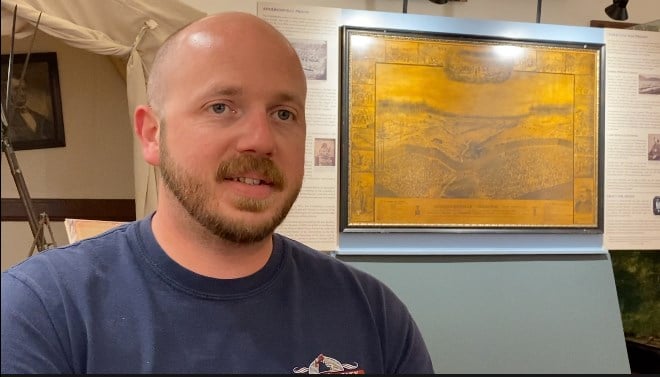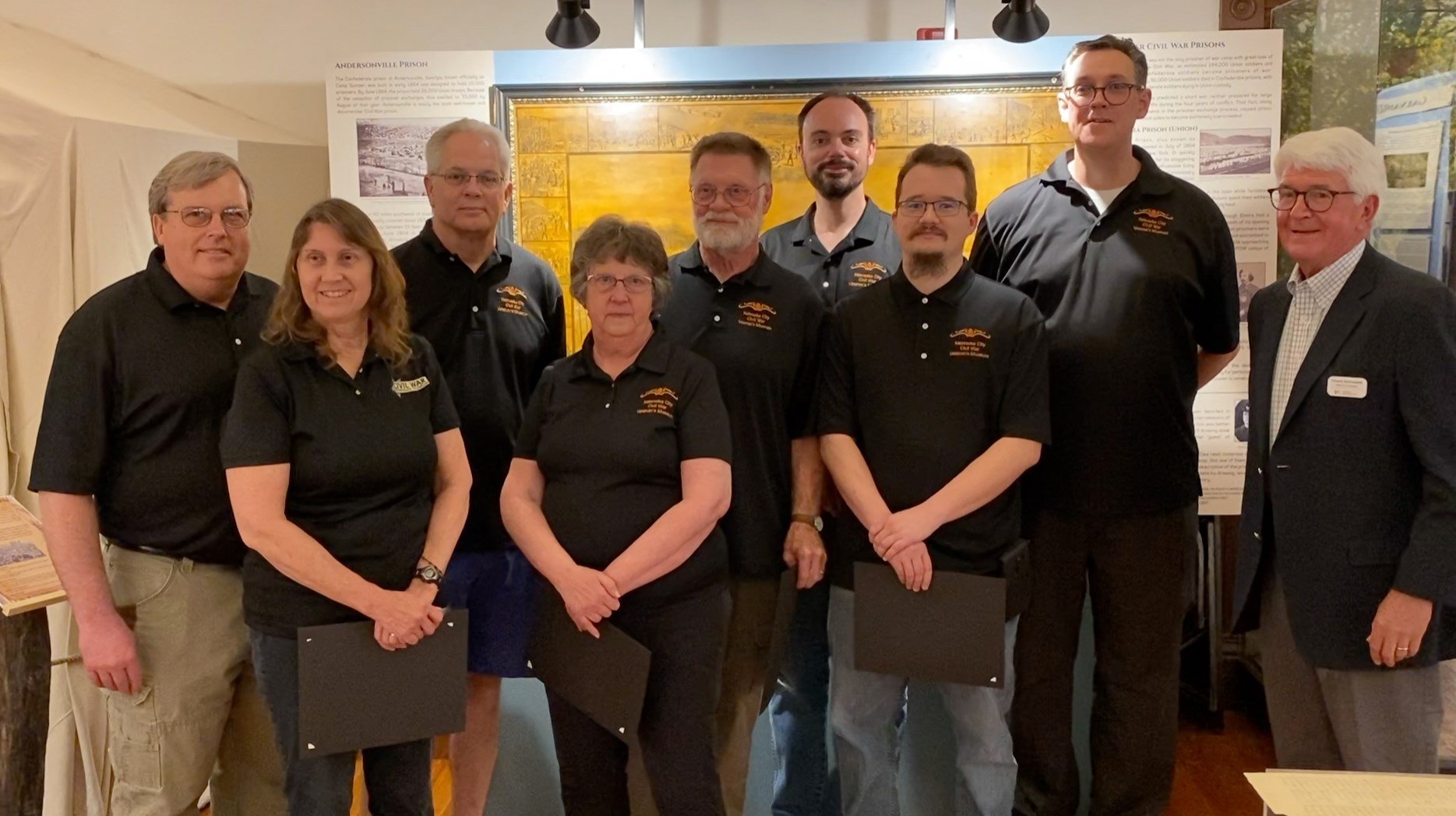NEBRASKA CITY – History Nebraska awarded Heritage Hero pins to board members at the grand re-opening of the GAR Hall Civil War Veterans Museum in Nebraska City noting the weighty task of transforming the visitor experience.
Schroeder: “In that it fundamentally said this institution was transformed from a big collector of things and showing off those collections to being a story teller, to using these properties to tell a story, to help people understand something they didn’t understand before, think about something they haven’t thought about before. Perhaps see the world a little different than they did before they walked in the front door.”
Dean Shissler, museum coordinator for the Nebraska City Museum Association, said it took 18 months and hundreds of hours to inventory thousands of artifacts and decide how to tell a story in 28 new, exhibit panels.

Shissler: “They were engaged. One of the things we did was dole out assignments basically to each individual person and say, okay you want this topic and your’re adamant about it at this meeting. We’re going to meet in another month, go and find us resources and references and do research and come back with a page or two that fights for your topics that you want.”
Discussions on the causes of the war included decisions on whether the museum would take an institutional stance.
Shissler: “It’s a board decision, an institutional opinion, to say the causes of the Civil War – the cause was slavery. That is hands down. There is no other wording. There is nothing in there. That’s the institutional stance. I think that was, I wouldn’t say controversial, but it was a long discussion.”
The board also stressed the importance of presenting regional artifacts.
Shissler: “We also cover the 1st Nebraska, which was a calvary unit and an infantry unit. We covered this history of this GAR post. We cover the homefront, but we focus on the homefront here in Nebraska.”
He said the museum’s storyline has value to people living in modern society.
Shissler: “I think the most important thing that someone could take away from here, in just coming through and having an open mind and learning things, is the origins of the issues today, because those origins weren’t in 1860, in 1861 at the beginning of the Civil War, they went back 400 years – they go back to 1619, I believe 1620, but everything kind of came to a head in 1860, 1861.”
For decades the exhibits were well-marked and kept behind glass display cases. Now visitors enter with a video starting with the pre-war story and exhibits leading to the post-war soldiers of both the Union and Confederacy.
Shissler: “Where do we no go from here. That’s the hope, I guess, is the understanding that people gain from coming through here because we do tell stories from both sides. It’s because this is a museum dedicated to the veterans of both sides.”
















